
Arquivo para a ‘Information Science’ Categoria
Being, clearing and humanism
In the context in which Heidegger wrote Being and Time,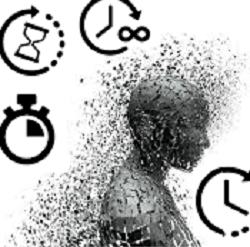 it is what remains hidden within a whole, where being should emerge, this is appropriate to the discourse of modernity where there is a reduction to human material life, and a division between what it is subjective and objective in Being.
it is what remains hidden within a whole, where being should emerge, this is appropriate to the discourse of modernity where there is a reduction to human material life, and a division between what it is subjective and objective in Being.
This fragmentation emerges only in one part, most of the time it is opposite to the entity to which the being belongs, explaining in a different way, making a joke: “the being of the entity”.
Being and being are intertwined, being is conditioned by being, since it has a broader sense, this broader definition Heidegger defined as Dasein, or being-there to say this fact that there is a cosmovision of being in relation to a context broader scope of your experience.
However, far from a solution to the paradox of modernity, what Heidegger called the manifestation of being through language, including poetics as one of the functions of language, making there an abode of being, which would preserve the ex-tactician naming in the clearing.
The clearing would be nothing more than the truth of being, that is, it would remove us from the abyss of our ex-sistent essence, and the clearing would give us back the “world” and language is the advent that reveals and clears up being itself, but Sloterdijk responding to its clearing in Heidegger’s Letters for Humanism, he makes an answer in the book Rules for the Human Park, saying of the failure of this clearing and of humanism.
This clearing is neither the habitat nor the environment, and this one finds itself in rupture with nature, where it identifies the failure of the human being as a shepherd of the being, whose essence would not be to take care of the sick, but to keep his flock in the clearing, the clearing is the open world and, in this case, the task is used in the being freely chosen and impregnating itself with the being itself.
Before advancing in the criticism, it is necessary to emphasize Sloterdijk’s praise of Heidegger, there is a praise of his criticism of Humanism, reconceptualizing it and seeking the essence of man in this system.
Sloterdijk’s starting point is Heidegger’s critique, where he seeks a better understanding of what man is within this humanism, and a greater understanding of the clearing.
Subjectivity is no longer a mere grammatical fundamental and becomes a foundation as a human representation, whether of its feelings or its essence, and of man in this system.
Sloterdijk’s starting point is Heidegger’s critique, where he seeks a better understanding of what man is within this humanism, and a greater understanding of the clearing.
Subjectivity is no longer a mere grammatical fundamental and becomes a foundation as a human representation, whether of its feelings or its essence, and thus the foundation becomes the self, thus modernity opens an object-subject relationship.
Everything, then, is for man, it is anthropocentric and the world opens up to domination, for science and technique to dominate it, grounding all knowledge, but what is the knowledge about Being.
By exchanging this vocabulary from humanism to his own (subjectivity) Heidegger states, according to Sloterdijk, that the school of domestication of man, which is really a school, the pedagogical project initiated by the Romans, is a failed school, domestication was not possible.
Two of Sloterdijk’s successes are an astonishment for the future of civilization, first a positive necessity that is co-immunity, the idea that only a joint defense of the Being overcomes the self, the other dangerous is that the domestication project has failed and the clearing is an imperative, not just a humanist narrative.
Sloterdijk says textually: “the history of the clearing cannot be developed only as a narrative of the arrival of human beings to the houses of languages” and from there he elaborates his anthropotechnics, will be our next topic.
SLOTERDIJK, P. (2000) Regras para o parque humano. (in portuguese) Trad. José Oscar de Almeida Marques, Brazil, São Paulo: Estação Liberdade.
Winter can be terrible for war
In a videoconference with the G7 in this Monday (06/27),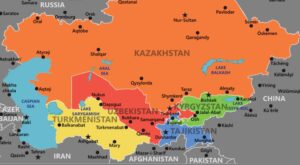 Ukrainian President Volodymyr Zelensky called for the war to cease until winter, always a harder period for troops and for regions at war, this indicates two concerns: an intensification of battles in autumn (in the southern hemisphere it is the spring, from September to December) and possible difficulties in the supply of gas and food in the period.
Ukrainian President Volodymyr Zelensky called for the war to cease until winter, always a harder period for troops and for regions at war, this indicates two concerns: an intensification of battles in autumn (in the southern hemisphere it is the spring, from September to December) and possible difficulties in the supply of gas and food in the period.
On the Russian side, the gas supply cut, which has an obvious financial sacrifice, could mean a collapse in heating systems, domestic and industrial use in the region.
The G7 meeting started Sunday (26/06) with the countries: USA, UK, Germany, Italy, Canada, France and Japan, and the videoconference was held on the 2nd. Fair (27/06), the president also denounced the Russian attack on a crowded mall in the Cremenchuk region, with more than a thousand people.
The battles are still tough in the Dombass region, although there is Russian advance, the cost in troops, armaments and morale has been high for both sides, in short, there is a growing hatred and a possibility of peace increasingly distant.
In a political effort, the president of Russia will make his first trip abroad visiting two former Soviet states: Turkmenistan and Tajikistan, and then he will still meet with Indonesian President Joko Widodo, there are no statements on the subject of the talks, but with It’s certainly a geopolitical issue (see map).
But behind this trip there is a more worrying objective, Putin’s concern with borders, in this case with the countries of Asia, indicates both nostalgia for the former Soviet Union and a long-term warlike concern, this has a dark outline for the future. of humanity.
Of course, there is no one-sided warmongering, also the NATO response has been harsh as Sweden and Finland officially hand over the request for entry into NATO, Moldova and Georgia is also preparing its entry, while Ukraine lives waiting for a late entry.
The scenario is extremely worrying for autumn in Eastern Europe, which is spring in the Southern Hemisphere, a growing concern about the supply of food and oil agitates the entire world, but the biggest nightmare is the war itself and its contours.
Few and heroic voices unite for peace (see our post), the concern about polarization is now worldwide.
The being between the break and the way
Two sentences of Heidegger’s well reflect his essential 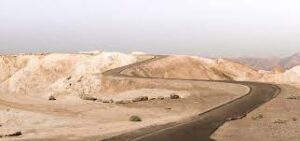 questions that make more sense in moments of deep crisis: “We must raise again the question of the meaning of being” and “The human being is an ontologically privileged entity because in its existence its own is at stake”. being.” (in ‘Being and time’), then the path must start from a contemplative pause.
questions that make more sense in moments of deep crisis: “We must raise again the question of the meaning of being” and “The human being is an ontologically privileged entity because in its existence its own is at stake”. being.” (in ‘Being and time’), then the path must start from a contemplative pause.
The agenda is also a moment for the opening of being and an epoché about the meaning of existing, with other men, within a historical and solidary context with nature that is the “house” where it lives, while language is the abode of the human being. To be.
This requires a desert, a change of mentality, leaving the Fatigue Society, facing the pain and risks of a pandemic with another vision (Byung Chul Han wrote the Palliative Society) and finally finding peace in a new way, breaking with the structures of evil.
Only those who have passed through the desert, through the “valley of shadows”, which are now not exclusive to a single Being, but are shadows over the civilizing process around the world, including the possibility of war, hunger and an endless pandemic if we don’t change the posture.
The biblical story tells John the Baptist who went to the desert and announced a new time, which Christians celebrate his birth these days, Jesus also went to the desert where he was tempted and experienced hunger being fed by “angels”, and humanity as will cross your desert
To follow the path it is necessary to go through these questions, answer these questions, as the biblical passage says in (Lk 9, 20), Jesus after being rejected in Samaria and preventing the apostles from coming into conflict with that people, says to the having a disciple who wanted to bury his father: “Let the dead bury their dead, but you, go and announce the kingdom of God”.
This means that we should not look at what is dying, but at what is being born in the middle of the desert, because that is where a new path begins.
The path and being
Even if I have read Heidegger, few have read at least in its entirety O ser e o tempo, or another work that I consider important The origin of the work of art, and the most controversial (at least currently) that is Letters on Humanism, not only because Sloterdijk rejected it, but because thinking about what humanism is today is the most important task in trying to save civilization.
entirety O ser e o tempo, or another work that I consider important The origin of the work of art, and the most controversial (at least currently) that is Letters on Humanism, not only because Sloterdijk rejected it, but because thinking about what humanism is today is the most important task in trying to save civilization.
Just look around, from the pandemic to war, the extreme and sometimes irrational political politicization, and not only all of this, but especially the sharp look and thinking that saw beyond appearances.
There are two good biographies of Heidegger, one by Hugo Ott, which I read in pieces and another that I read and passed on to so many friends, which is Rudiger Safranski’s, both deserve to be read and are not Heidegger.
On the way through the forest, the time that Heidegger spent around the fire, where he smoked his pipe with the peasants and woodsmen of the Black Forest, it is said that in silence, perhaps it says more about Heidegger than his philosophy, says something of the poetry he did not write. , but lived.
It was there in an interview that Heidegger gave to Der Spiegel that he said (not in a religious tone but in a tone of disbelief) he said the phrase: “Only a God can save us”, and he was right.
The rustic and simple hut that Heidegger inhabited during the time he wrote Being and Time, was also his refuge in the time of the Forest Path, and of a short little-known writing that “Creative Landscape: why we perpass in the province”, that it is not a compliment to the province, but the need for a contemplation that urban life had lost, a path similar to the one that a younger philosopher Byung-Chul Han wrote in The Society of Fatigue.
It is written in “Creative Landscape”: “The city dweller thinks he “mingles with the people” as soon as he deigns to have a long conversation with a peasant. At night, on a break from work, when I sit by the fire with the peasants, or at the table in the Herrgott swinkel, then most of the time we don’t say anything. We smoke our pipes in silence”, the note clarifies that Herrgottswinkel is an establishment in the countryside.
So it’s not isolation or provincialism, but a pause to get back on track.
HEIDEGGER, M. (2014) Paisagem Criativa: Por que permanecemos na província , in: Idéia. Campinas (SP)|n. 9.
Path and method
Every path requires a path, a path traced and directed to a 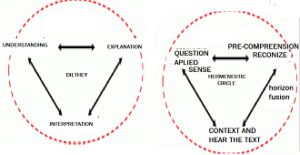 scientific object is a method, there are more complex definitions, but in general they are already linked to a methodology.
scientific object is a method, there are more complex definitions, but in general they are already linked to a methodology.
A widely used definition is “scientific method refers to an agglomeration of ground rules of procedures that produce scientific knowledge, whether new knowledge or a correction or an increase in the given area”.
This type of general rule can fall either into logical positivism, a determinism about the sciences, or into an empiricist reductionism that sees the object under certain parameters.
Both Karl Popper and Thomas Kuhn would argue against this view of method, Popper sees it as provisional knowledge, with successive falsifications, whereas Thomas Kuhn elaborated the idea of changing paradigms that he calls scientific revolutions, either by one or the other science must have theories that evolve over time.
Just as the path itself can lead to falsifications or new discoveries, we prefer the term path, but in order not to fall into sophistry (theories that deny an episteme) it is necessary both to focus on the investigated object and to be open to the new, as in philosophy not it must begin with a hypothesis, but with a question that one seeks to resolve.
Looking at an object imagining something similar to the Other helps, but it does not solve the problem, it is necessary to investigate its variants and its pitfalls, in short, always questioning.
Both ontology and phenomenology, both are philosophically interconnected, and both admit metaphysics, have this reference in relation to the method and its object, as well as reject any methodological and theoretical dogmatism about the investigated object.
Also the historical path is not deterministic, in this respect Hans Georg Gadamer wrote questioning Wilhem Dilthey’s romantic historicism and retracing Heidegger’s hermeneutic circle, thus changing Dilthey’s methodological hermeneutics to which hermeneutics leads the interpretation of cultural changes within a historical context,
Both Gadamer, Antony Giddens and Boaventura de Souza Santos are concerned theorists concerned with developing a methodological approach to verify the fundamental conditions under which paradigm shifts occur.
For this, one must observe the “path”, understand the path and be open to a new horizon.
References:
GADAMER, H-G. (1998) Verdade e método: traços fundamentais de uma hermenêutica filosófica. Petrópolis, RJ: Vozes, Brazil.
GIDDENS, Anthony. (1984) Structuration theory, empirical research and social critique. In: _____. The constitution of society. Cambridge: Polity Press.
SANTOS, Boaventura de Souza. (1989) Introdução a uma Ciência Pós-Moderna. Rio de Janeiro: Graal.
Peace also has protagonists
If war makes its “heroes”, peace makes its “heroes”, three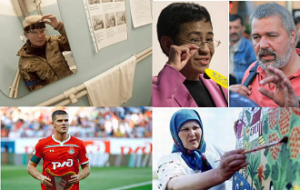 cases were reported last week: Russian journalist and Nobel Peace Prize winner Dmitry Muratov who is auctioning his medal for Ukrainian refugees, the former captain of the Russian football team Igor Demisov, midfielder said that I send a video to President Vladimir Putin in March asking him not to continue with the conflict and the last and most touching was the release of nurse Yuliia “Taira” Pavievska (photo 1), known like Taira, heroine of Ukraine in Mariupol where she also took care of Russian soldiers.
cases were reported last week: Russian journalist and Nobel Peace Prize winner Dmitry Muratov who is auctioning his medal for Ukrainian refugees, the former captain of the Russian football team Igor Demisov, midfielder said that I send a video to President Vladimir Putin in March asking him not to continue with the conflict and the last and most touching was the release of nurse Yuliia “Taira” Pavievska (photo 1), known like Taira, heroine of Ukraine in Mariupol where she also took care of Russian soldiers.
Taira had released a video with images of the “horrors” in Mariupol, and worked in precarious conditions of medicine and equipment, even so he also served the Russians.
Nobel laureate Dmitry Muratov, on the other hand, said that there is less and less independent press in his country, but that he already observes a growing distrust of the population around the war, Dimitry received the Nobel Peace Prize along with Filipino-American journalist Maria Ressa ( photo 2).
The footballer Igor Demisov (photo 3) said that he feared for his life after making his request for peace public, saying “I don’t know. They may arrest me or kill me for these words, but I say things as they are. I even told him: I’m willing to kneel before you”, even though he said he was proud.
The fourth photo is a painting by Maria Prymachenko (photo 4), about 25 works may be destroyed in the small old Ivankiv museum, on the outskirts of Kiev, she made drawings, painted pictures (photo 4) and did embroidery, Pablo Picasso considered her “brilliant” after seeing her works in Paris.
The lamentable statement by former Russian President Dmitry Medvedev, who expects the United States to beg for a discussion of nuclear weapons, and no less regrettable NATO declaration Jens Stoltenberg, that the war will be long, no breath for peace, no word of hope or dialogue.
Peaceful people never tire of asking for peace, the appeal to reason and dialogue, even if it is belated.
Being and Contemplation
The thinker Byung-Chul Han developed the themes of Hannah Arendt Vita Activa and Vita Contemplativa in his book “A society of Bournout”, where he reveals that “the loss of the contemplative capacity is in correspondence with the absolutization of the vita activa – which measure to the hysteria and nervousness of the modern society of action”, and this leads to tiredness, depression, self-exploitation and Burnout.
Arendt Vita Activa and Vita Contemplativa in his book “A society of Bournout”, where he reveals that “the loss of the contemplative capacity is in correspondence with the absolutization of the vita activa – which measure to the hysteria and nervousness of the modern society of action”, and this leads to tiredness, depression, self-exploitation and Burnout.
According to the Korean-German thinker, current life has led to the “imperative of work, which degrades the person into animal laborans”, which makes him lose the “world” and “time”. new “the contemplative vita in your bosom” and “put yourself at your service again” (O Aroma do tempo. A philosophical essay on the art of delay, 2009).
Despite this loss, there is a renewed interest in spirituality in Western civilization, but it does not consider traditional religions more important, which occurs in the sphere of a phenomenon called “mindfulness”, linked to neurosciences and in health care, education and business.
There is no deeper meaning in this relationship that reaches the divine, the superhuman or the beyond-human, it turns to what Peter Sloterdijk calls “the exercise society”, without the possibility of a true spirituality, or a despiritualized asceticism.
Hannah Arendt had touched on the problem lightly, it must be remembered that her thesis was on “Love in St. Augustin” without the help of the divine it does so without success, it remains hidden.
“With the title Vita contemplativa, that world in which it was originally located should not be reconjured. It is linked to that experience of being, according to which the beautiful and the perfect is Immutable and Imperishable and withdraws from any and all human use” (HAN, p. 35), although for the author the contemplative capacity is not necessarily linked to the imperishable Being (p. 36).
The concept of what the soul is was treated by Saint Justin, in the second century of the Christian era, before becoming a Christian he had approached the Stoics, but they did not consider it important to know God, then he approached the Pythagoreans and had to dedicate himself to numbers and music, and finally it was Plato’s disciples who thought as much about corporeal things as about ideas, but the key problem that distanced him was the question of the “soul” and is in his “Dialogue with Trypho”.
For older Christians (Catholic, Orthodox and Eastern) Eucharistic Adoration is the greatest contemplation, because God makes himself a piece of bread, a consecrated host.
Han, Byung-Chul Sociedade do cansaço. tradução de Enio Paulo Giachini. – Petropolis, RJ: Vozes, 2015.
Being and action
Being is not inactivity, because it is being that determines its action,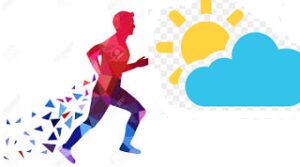 but the pure project on action empties being, it is activism or “vita activa”, the one that Husserl, Heidegger, Hannah Arendt, and more recently Byung Chul Han question about the absence of vita contemplativa, the interior.
but the pure project on action empties being, it is activism or “vita activa”, the one that Husserl, Heidegger, Hannah Arendt, and more recently Byung Chul Han question about the absence of vita contemplativa, the interior.
It is not about subjectivity, because it is precisely the separation between objective and subjective being that is the first great impulse for the emptying of being, it is not also about the social being, it is what is projected in man’s consciousness, in the intention that it directs to the object, to the external life.
The “vita activa” (life in action) was thus expressed by Hanna Arendt: “The expression vita activa, comprising all human activities and defined from the point of view of the absolute stillness of contemplation, therefore corresponds more to the Greek askholia (occupation, restlessness) with which Aristotle [defines] all activity, which the bio politikos of the Greeks. The expression vita activa is permeated and overloaded with tradition. It is as old as our tradition of political thought, but no older than it. The expression itself, which in medieval philosophy is the consecrated translation of Aristotle’s bios politikos, already occurs in Augustine where, as vita negotiosa or actuosa, it still reflects its original meaning: a life dedicated to public and political affairs” (Arendt, 2007, p.23), in this explanation by Arendt there is also a complete translation of the political animal.
What action is for Arendt, is not that of activism or voluntarism, but that which takes place “between” men, depends on intersubjectivity (the relationship of interiorities), which she says thus: “the end, the last of the elements of vita activa addressed by Arendt is action. Action is the element of interpersonality and the environment of intersubjectivity, that is, it occurs between men. Therefore, because it is developed between people, the action is observed in a prominent way from labor and work, such elements do not influence it.
So what considers the human condition of action is plurality, he says textually: “Considering that action is an activity of free men in the public sphere, it is an expression of human plurality. Its realization depends on the coexistence between different individuals. However, since action requires an interactive diversity, it particularizes men. It promotes the appearance of individualities and enables the construction of identities. Now, man will never be able to manifest his uniqueness in isolation. Nobody shows what it is in the personal sphere of intimacy. Only when he is with others can man reveal what he is” (ARENDT, 2007, p.189).
But Hannah Arendt considers modernity in crisis only from the beginning of totalitarianism and the events of the two world wars, and in our view the problem already arises in rationalist/idealist thinking.
ARENDT, Hannah. (2007) A condição Humana. (The Human Condition). 10th ed. Rio de Janeiro: ed. Forense Universitária. .
The Being and the Truth
In times of crisis, fake news and a pandemic, little truth comes out, each and every group wants to interpret the truth according to their narrative, but the truth is the Being, and its address is in language, it is necessary to have interiority and Spirit of Truth to inhabit it.
each and every group wants to interpret the truth according to their narrative, but the truth is the Being, and its address is in language, it is necessary to have interiority and Spirit of Truth to inhabit it.
The play on words, the cruelty of war or the political and even legal manipulation of the truth are instruments for emptying the truth, even pure subjectivity is not a really spiritual exercise, it is, as Sloterdijk says, part of a “society of exercises”, in this case it is despiritualized.
The hermeneutic circle that proposes the fusion of horizons and the opening of orthodox discourses and narratives was the path of Hans-Georg Gadamer to write his magnum opus “Truth and Method”, in which the author develops the Heideggerian hermeneutics putting it before the Being.
The absence of depth that reveals Being, the highest and most interior truth, causes lies to spill over realities (fake-news is just a media use of them), narratives that do not account for the totality of the truth, fanaticism, wars and aberrations.
The man outside his Being is thrown into the meaningless void, it is not the void of the search and the epoché, it is the void of anguish and the absence of solid paths that lead us to the full truth.
For Christians, the biblical passage John 16:12 is quite strong: “But when the Spirit of truth comes, he will guide you into the whole truth. For he will not speak on his own, but whatever he hears he will speak, and even things to come he will announce to you.”
So this spirit is able to unveil even the future, now so uncertain and fearful, and only it can really free us from such a heavy and dark present for humanism.
Gadamer, H. G. (1999) Verdade e Método. Tradução de Flávio Paulo Meurer. Brazil, RJ: Vozes.
Glade, abode and Being
For Heidegger, Being has abode and presence, and this is what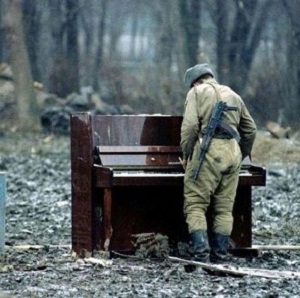 enhances the clearing as a destination, this void of modernity is precisely the emptying of Being as Dwelling and Presence, necessary for Being to fill this void, in which Being of re-veiling or unveiling, the concept is confusing in Portuguese because to re-veal would be to veil again and to unveil would be presence.
enhances the clearing as a destination, this void of modernity is precisely the emptying of Being as Dwelling and Presence, necessary for Being to fill this void, in which Being of re-veiling or unveiling, the concept is confusing in Portuguese because to re-veal would be to veil again and to unveil would be presence.
Says the Heideggerian text: “Destiny appropriates itself as the clearing of being, which is as clearing. It is the clearing that grants the proximity of being. In this proximity, in the clearing of “Giving space”, man lives as a former assistant, without him being able to experience and assume this dwelling today” (HEIDEGGER,
The abode can be said that the house of being as language, in it the manifestation of being is consummated, ancient philosophy would say this is a return to nominalism, but the linguistic turn has overcome this, as it radiates from it and transforms itself into action, as something from thinking, because only from the act of thinking can we remove the process of doing and operating, so that is why language is “dwelling”.
In this dwelling, the ex-tactical is preserved, and in it the clearing is determined, it removes us from the abyss of our ex-sistent essence, the clearing is the “world”, and language is the advent that clears and reveals the very being. , this was contested by Peter Sloterdijk, in his answer in the book Rules for the Human Park, where he reveals the failure of the humanism project, yes, but the Humanism that Heidegger reveals in “Letters to Humanism”, which is nothing more than the of modernity.
This is easy to demonstrate since Sloterdijk considers the humanism he criticizes (of Heidegger) as a shepherd of being, that its essence and its task originate in knowing how to guard the being and corresponds to it, thus keeping its flock in the clearing, which is the open world, but which
All of Sloterdijk’s work is thus surrounded by this dilemma of modernity, occasionally evoking terms that come from theology, in his later works Spheres I, II and III: “Matrix in grêmio” that recalls the religious figure of Mary, or the In-sein In-Sein has, according to Sloterdijk, an anthropological origin, which is the experience of the fetus in the mother’s womb, without the Christian perspective, of course.
It will be a disciple of yours, Byung Chul Han, who will address more broadly the question of Being as a questioning in modernity, certainly due to its oriental origin, the reading of the clearing goes deeper into modernity: The society of fatigue, The aroma of time and The agony of Eros, unveil the drama of modernity, I look forward to something from Chul Han on the war landscape.
However, a picture of the Chul Han pandemic has already been outlined in his Palliative Society and Pain Today, we have already made a post, how much the Being moves away from pain or from what can approach it, so we created a series of palliatives, which is the distance from the clearing (my conclusion).
HAN, Byung-Chul. (2021) The palliative society: pain today. trans. Lucas Machado. Brazil, Petrópolis: Vozes.
Heidegger, M. LETTER ON HUMANISM. Transl. by Miles Groth, s/d. (PDF)
Sloterdijk, P. Regeln für den Menschenpark: Ein Antwortschreiben zu Heideggers Brief über den Humanismus. Frankfurt/M.: Suhrkamp, 1999.

